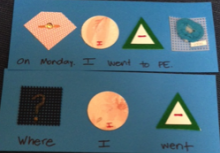Introduction to Standard Tactile Symbols
The Developmental Model
Standardization: Moving from Concrete Tangible Symbols to More Abstract Tactile Symbols
The System is Sustained
Continuum of Symbol Systems...
Multiple Disabilities
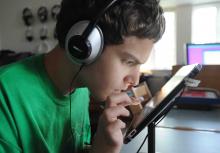
Posted by Tara Mason
John is in tenth grade and has a visual impairment and cerebral palsy. He is attending high school in a one-to-one iPad school district, and his team would like to investigate the effectiveness of him using an iPad as Assistive Technology (AT). This device...
Posted by Liamsmom
Last year my son started all-day Kindergarten in a public mainstream classroom. I was (and still am) a huge advocate for inclusion for my son Liam who is deafblind. One of my biggest hopes and goals for inclusion was all about the "social...
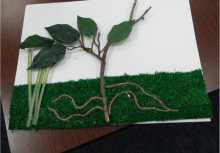
Posted by Liz Eagan
Tactile books are a great way to foster the development of literacy skills with any child who is visually impaired, including children with other significant disabilities. These can be used at home for enjoyment, to support understanding and anticipation...
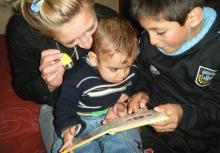
Posted by Charlotte Cushman
The shopping is done and the presents are wrapped. The next thing to do is to put away the lists and make time to read aloud with your family. This is something that can be enjoyed by everyone at any age and can include songs, poems, rhymes....
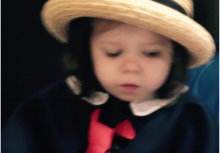
Posted by Laurie Hudson
In Brown Bear Part I, posted earlier on Paths to Literacy, I used a short video of a teaching segment to demonstrate what the concepts in my iBook, “Introducing Braille,” might look like for a struggling reader with multiple impairments. ...
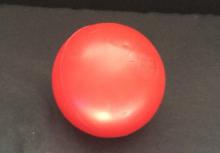
Posted by Jaime Brown
After students with CVI (Cortical Visual Impairment) have learned to view and identify real objects, they are ready to learn to identify two-dimensional pictures. It is essential to recognize the differences in a student’s visual skill set before...

Posted by Laurie Hudson
THE BIG PICTURE
In my iBook “Introducing Braille,” I largely used videotaped examples of bright, enthusiastic young students to show ways to “Make It Fun,” “Make it Developmental,” and “Make It Meaningful...

Posted by Jaime Brown
Story boxes have been around for years. When I taught Head Start they were called "prop boxes". As a Head Start teacher, I used my prop boxes to make the story more fun, engaging and interactive. When I became a TVI I realized that story...
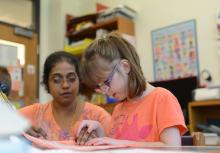
Posted by Liz Eagan
I have been asked repeatedly how I come up with goals and how I document progress or regression on them. Good questions! In coming up with goals, it all starts with some form of assessment. I don’t pull goals out of midair. Texas School for the Blind...
Posted by Jaime Brown
Typically when we think of pre-literacy activities, we think of increasing tactual and print awareness, object and letter identification, and book handling skills. Learning literacy skills begins even before students learn to recognize and identify...
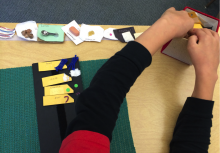
Posted by Megan Mogan
Whether you are raring to go and have your materials all organized, or your vacation flight arrives home the night before your first day back, it’s time. Here are just a few things I like to remind myself this back-to-school time of year. ...
Posted by Liamsmom
My son Liam, who is deafblind, will be starting first grade in a couple of weeks in a mainstream classroom. Last year, I bought all of Liam's supplies and labeled them myself. This year I wanted Liam to be part of the process. And of course I wanted...
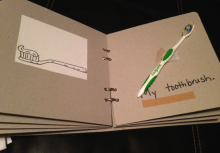
Posted by Liamsmom
My son Liam attends a mainstream public school. He just finished Kindergarten last year, where he would get these little mini-books that his classmates were reading. I have taken some of them and modified them so that they would be accessible for Liam, as...
Posted by Liamsmom
I wanted to create some "science" books for my son Liam (he just turned 6 years old and is deafblind) for him to use for the next school year. I looked up first grade standards and noticed a focus on animals and their habitats, life cycles,...
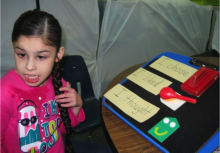
Posted by Faye Gonzalez
Part 2: Using a Partial-Object Based Communication System for Literacy
The majority of Augmentative and Alternative Communication (AAC) systems available today use visually based symbols. Often, however, students with Multiple...

Posted by Megan Mogan
I used to be that therapist. The one who threw around the words “self-stimulatory behaviors” and “idiosyncratic language” all of the time. The one who described her students as engaging in silly sounds, strange...

Posted by Lisa Pruner
This post is by Lisa Pruner and Catherine Summ.
Overview
For children with vision impairments, fire safety and awareness are often literally out of reach, placing them at increased risk in the event of a fire
Smoke detectors,...

Posted by ScarlettsEyes
Scarlett is a great communicator, and the lack of spoken word does not stop her from expressing what she wants! Whether she evokes an emotion or leads you to a certain place, she knows how to get your attention.
Despite this I am desperate...
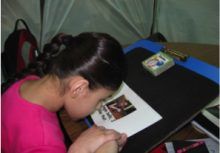
Posted by Faye Gonzalez
Part 1: Partial-Object Symbols are MORE than Just a Schedule: Communication Systems for Students with CVI and Multiple Disabilities
The majority of Augmentative and Alternative Communication (AAC) systems available today use visually-...

